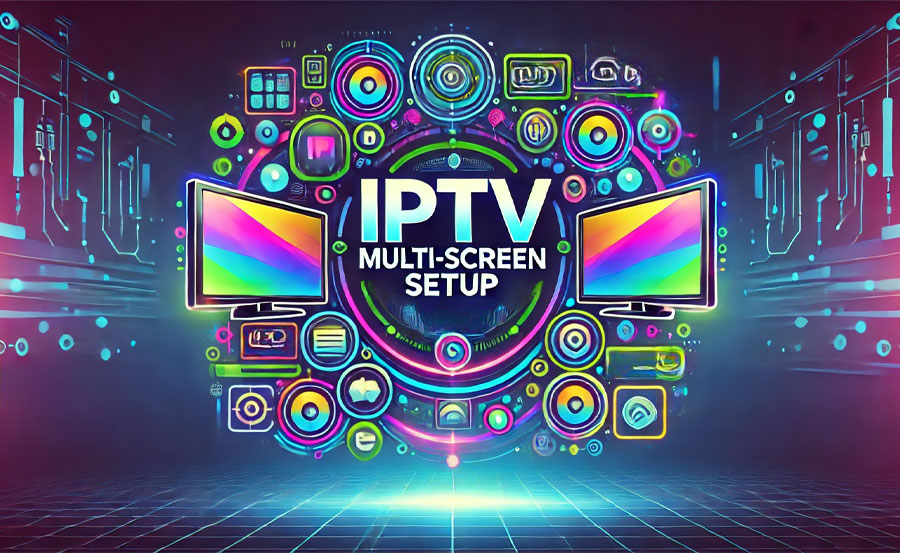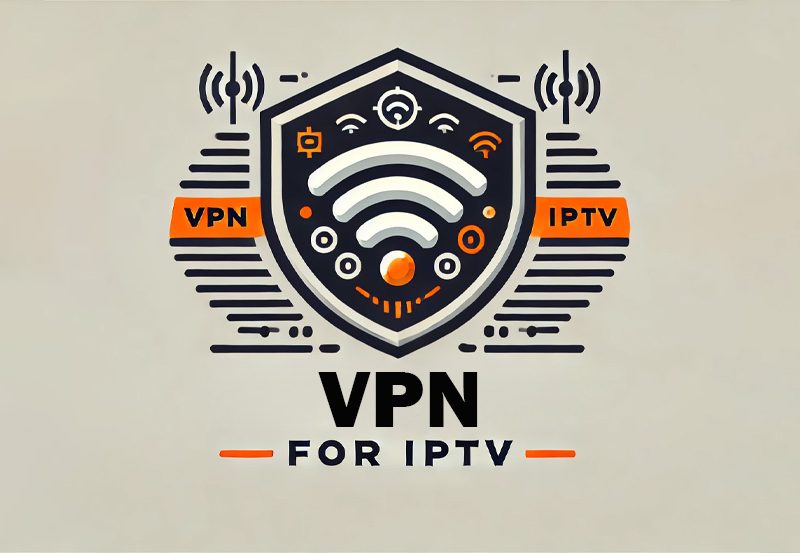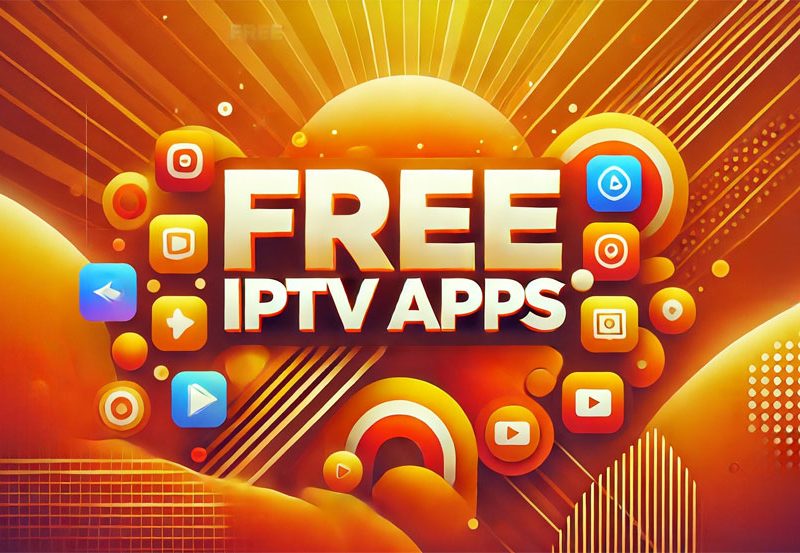In the modern digital era, streaming content is no longer limited to just one screen. Multi-screen viewing has become a major trend, allowing users to watch their favorite IPTV channels on multiple devices simultaneously. Whether it’s watching a live sports event on your TV while following social media reactions on your smartphone, or catching up on a movie on your tablet while the kids enjoy their favorite shows on another screen, IPTV apps have made managing multiple screens easier than ever. In this article, we’ll explore how to use IPTV apps to manage multi-screen viewing effortlessly and get the most out of your IPTV experience.
Buy 1 Month IPTV and Start Streaming
1. Understanding Multi-Screen Viewing
Multi-screen viewing, also known as multi-room or multi-device streaming, refers to the ability to access IPTV services on more than one device simultaneously. This feature is particularly useful in households where different family members want to watch different channels or programs at the same time. With multi-screen viewing, everyone gets to enjoy their favorite content without any conflicts. IPTV apps are designed to support this functionality, providing a seamless experience across TVs, smartphones, tablets, and even laptops.
2. Choosing the Right IPTV App for Multi-Screen Viewing
Not all IPTV apps are created equal, and selecting the right app is crucial for managing multi-screen viewing. Here are some features to look for when choosing an IPTV app that supports multi-screen viewing:
- Device Compatibility: Ensure the app is compatible with the devices you want to use. Most popular IPTV apps are available on Android, iOS, Smart TVs, and streaming devices like Firestick.
- Simultaneous Streams: Check how many simultaneous streams the app or your IPTV provider allows. Some IPTV services offer multiple connections as part of their subscription, while others may require an additional fee.How to Fix IPTV Channels Buffering During Peak Hours
- User-Friendly Interface: A user-friendly interface is essential for easily switching between devices and managing content across multiple screens. Look for apps that offer easy navigation and intuitive controls.
3. Setting Up Multi-Screen Viewing on IPTV Apps
To start managing multi-screen viewing, you need to set up your IPTV app on multiple devices. Below is a step-by-step guide on how to do this:
A. Install the IPTV App on All Devices
- Step 1: Download and install the IPTV app on all the devices you plan to use. This may include your Smart TV, smartphone, tablet, or streaming device.
- Step 2: Sign in using your IPTV provider credentials. Make sure to use the same account across all devices.
- Step 3: Some IPTV providers may require you to activate each device. Follow the on-screen instructions to complete the activation process.
B. Enable Multi-Screen Viewing
- Step 1: Once the app is installed on all devices, check your IPTV provider’s settings to ensure that multi-screen viewing is enabled. This may require logging in to your IPTV account on a web browser.
- Step 2: Verify how many simultaneous connections your subscription allows. Most providers will indicate the number of allowed streams in your account settings.
- Step 3: Start streaming different content on each device. You should be able to watch multiple channels or shows without any interruptions, as long as your subscription supports it.
4. Using Features for Better Multi-Screen Management
IPTV apps come with several features that can help you manage multi-screen viewing effectively. Here are some tips to make the most out of these features:
- User Profiles: Create separate user profiles for each member of the household. This ensures that everyone can access their own personalized content and viewing history, making it easy to switch between different shows and channels.
- Favorites and Playlists: Use the favorites or playlist feature to organize your content. Each user can create their own playlist, allowing them to quickly access their favorite channels or shows without having to search every time.
- Parental Controls: If you have kids, use the parental control features to restrict certain content on specific devices. This helps you manage what your children are watching while still enjoying your own content on another screen.
5. Optimizing Your Internet Connection
Multi-screen viewing requires a stable and fast internet connection to prevent buffering and ensure smooth playback on all devices. Here’s how you can optimize your internet connection for multi-screen IPTV streaming:
- Bandwidth Requirements: Make sure your internet plan provides sufficient bandwidth to support multiple streams. For HD content, you’ll need at least 10 Mbps per stream, so consider upgrading your plan if necessary.
- Wired vs. Wireless: For the best performance, connect your main IPTV device to the router using an Ethernet cable. This reduces the chances of interference and provides a more stable connection compared to Wi-Fi.
- Router Placement: Place your router in a central location to ensure even coverage throughout your home. If your Wi-Fi signal is weak in certain areas, consider using Wi-Fi extenders or mesh Wi-Fi systems to improve coverage.How to Connect VPN with Your IPTV App for Better Privacy and Access
6. Troubleshooting Common Issues with Multi-Screen Viewing
Even with the best setup, you may encounter occasional issues when managing multi-screen viewing. Here are some common problems and how to fix them:
- Buffering or Lag: If you experience buffering, check your internet speed and ensure no other devices are consuming excessive bandwidth. Reducing the video quality on one or more devices can also help alleviate buffering.
- Device Limits Reached: If you receive a message that your device limit has been reached, you may need to disconnect a device or upgrade your IPTV subscription to allow more simultaneous streams.
- App Crashes: If the IPTV app crashes on one device, try restarting the app or reinstalling it. Clearing the app cache can also help resolve performance issues.
7. Benefits of Multi-Screen Viewing with IPTV
Multi-screen viewing offers several benefits that make IPTV an ideal choice for modern households:
- Flexibility: Watch different content on different devices without any conflicts. This is especially useful in families where everyone has different preferences.
- Convenience: Switch between devices seamlessly. Start watching a movie on your TV, then continue it on your tablet when you move to another room.
- Enhanced Experience: Use multi-screen viewing to enhance your experience—watch a sports game on your TV while following live stats or commentary on your smartphone.
Managing multi-screen viewing with IPTV apps is easier than ever, thanks to user-friendly interfaces, multi-device compatibility, and advanced features like user profiles and parental controls. By choosing the right IPTV app, setting it up correctly on all your devices, and optimizing your internet connection, you can enjoy a seamless and convenient viewing experience for the entire family. Whether you’re catching up on your favorite series, watching live sports, or keeping the kids entertained, IPTV’s multi-screen functionality ensures that everyone gets what they want—when and where they want it.





